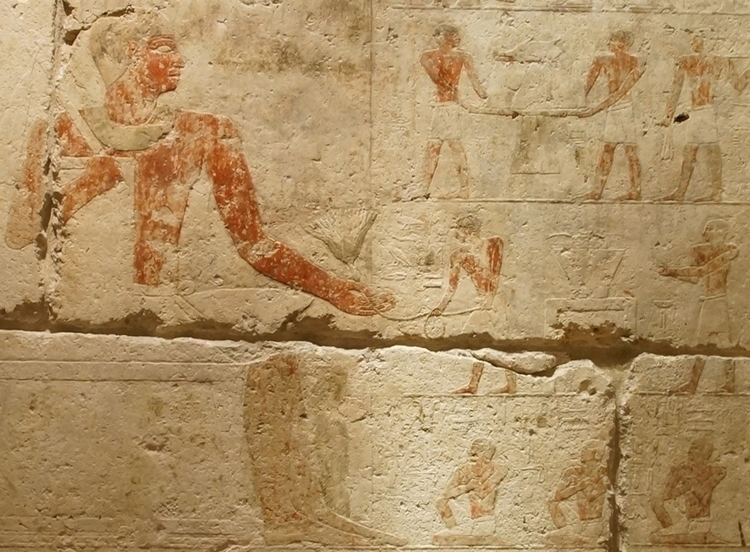 | ||
Seshemnefer (also labelled Seshemnefer III) was a Ancient Egyptian official of the Fifth Dynasty, most likely under king Djedkare Isesi. At the end of his career he became vizier, that is the highest office in Ancient Egypt, only second to the king.
Seshemnefer was born into an influential family. His father was also called Seshemnefer, his mother Henutsen. The father was overseer of the scribes of the king's document and overseer of all royal works. Seshemnefer III is mainly known from his mastaba at Giza (G5170). The tomb was excavated under the direction of Wilhelm Sieglin. The chapel of the mastaba was taken apart and is now in the museum of the University of Tübingen.
The wife of Seshemnefer was called Hetepheres, she was priestess of Neith, but also king's daughter of his body. He had four sons, three were also called Seshemnefer, the fourth one was called Neferseshemptah. One of these sons called Seshemnefer (IV) was buried at Dahshur and had mastaba there.
In the chapel of his mastaba Seshemnefer appears most often as overseer of the scribes of the king's document. At the end of his career he became vizier and overseer of all royal works. He also received the title king's son of his body, albeit evidently not being the son of a king.
The precise dating of Seshemnefer can only concluded via architectural observations. No king's name is preserved in his tomb. The mastaba of Seshemnefer is built next to the mastaba of an official called Rawer and uses the rear wall of the latter's mastaba. Rawer's mastaba uses the rear wall of the mastaba of another official called Djaty who is securely datable under king Neferirkare. Rawer and Seshemnefer must date later.
